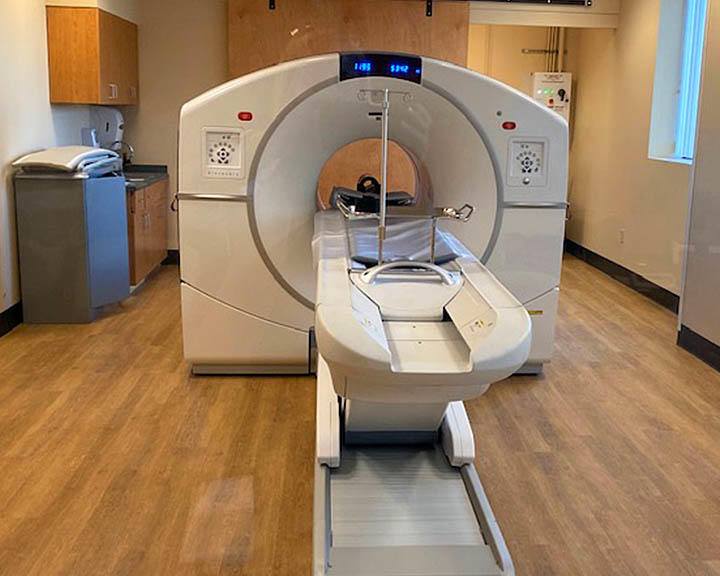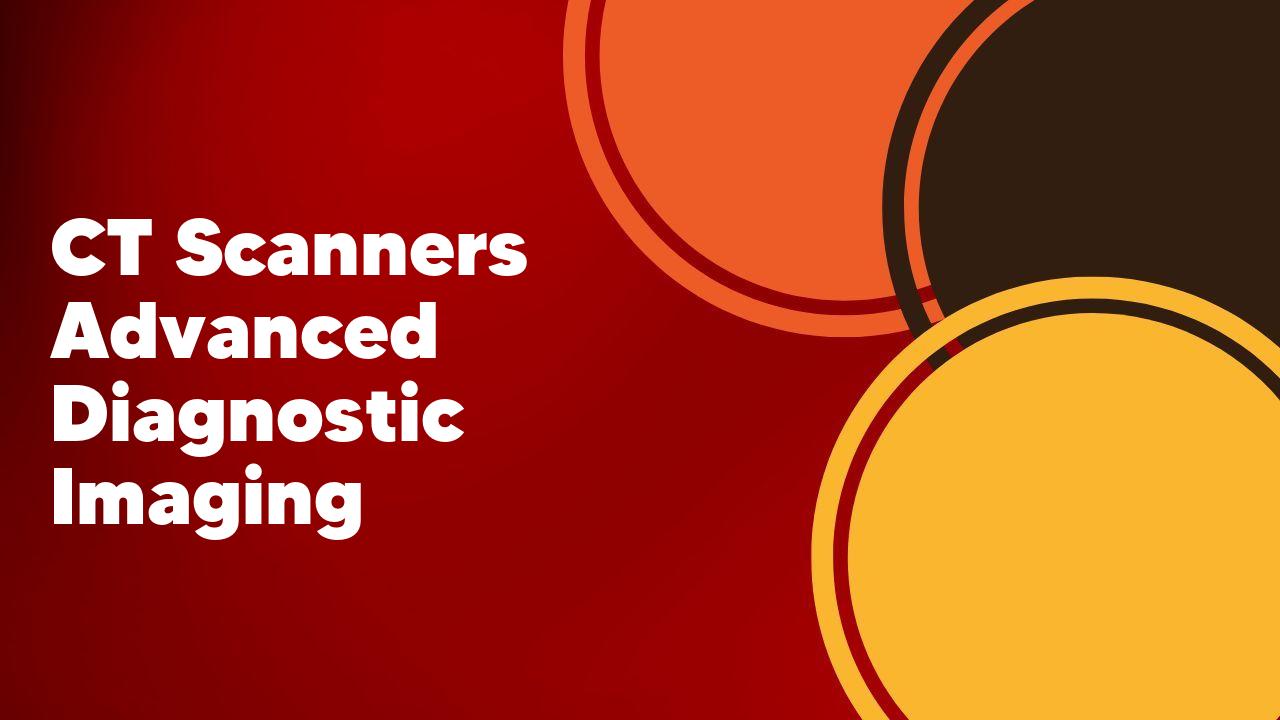CT scanners have revolutionized the field of diagnostic imaging, allowing doctors to obtain detailed images of the body’s internal structures. These advanced machines use a combination of X-rays and computer technology to create cross-sectional images, providing valuable information for diagnosing and monitoring various medical conditions. In this article, we will explore the benefits and advancements of CT scanners in the field of diagnostic imaging.
The Evolution of CT Scanners: How Advanced Diagnostic Imaging Has Transformed Medical Diagnosis
CT scanners have revolutionized medical diagnosis by providing advanced diagnostic imaging capabilities. These machines use X-ray technology to create detailed cross-sectional images of the body, allowing doctors to visualize internal structures and identify abnormalities. Over the years, CT scanners have evolved significantly, becoming faster, more accurate, and more versatile. The introduction of multidetector CT scanners has allowed for faster scanning times and improved image quality. Additionally, the development of advanced software algorithms has enabled the creation of 3D images and virtual reconstructions, further enhancing diagnostic capabilities. With these advancements, CT scanners have become an indispensable tool in modern medicine, enabling early detection and accurate diagnosis of various medical conditions.
Understanding the Technology: How CT Scanners Provide Detailed Images for Accurate Diagnoses

CT scanners are a crucial tool in modern medicine, providing detailed images that aid in accurate diagnoses. These machines use a combination of X-rays and computer technology to create cross-sectional images of the body. By rotating around the patient, the scanner captures multiple images from different angles, which are then reconstructed by a computer to create a 3D image. This allows doctors to examine the body in great detail, identifying abnormalities or diseases that may not be visible with other imaging techniques. CT scans are particularly useful for diagnosing conditions in the brain, chest, abdomen, and pelvis. With their ability to provide precise and accurate images, CT scanners have revolutionized the field of medical imaging.
Advantages of CT Scanners in Diagnostic Imaging: Why They Are Essential in Modern Healthcare
CT scanners have become an essential tool in modern healthcare due to their numerous advantages in diagnostic imaging. One of the main benefits of CT scanners is their ability to provide detailed and accurate images of the body’s internal structures. This allows healthcare professionals to detect and diagnose various medical conditions with precision. Additionally, CT scanners are non-invasive, making them a safer option for patients compared to other imaging techniques. They are also fast, producing images in a matter of seconds, which is crucial in emergency situations. Furthermore, CT scanners can be used to guide medical procedures, such as biopsies or surgeries, increasing their effectiveness and reducing risks. Overall, CT scanners have revolutionized diagnostic imaging and greatly improved patient care in modern healthcare.
CT Scanners vs. Traditional X-rays: Exploring the Superiority of Advanced Diagnostic Imaging
CT scanners and traditional X-rays are both commonly used for diagnostic imaging, but CT scanners offer several advantages over traditional X-rays. One of the main advantages is that CT scanners provide a more detailed and comprehensive view of the body. This is because CT scanners use a series of X-ray images taken from different angles to create a 3D image of the body, allowing for a more accurate diagnosis. Additionally, CT scanners can detect smaller abnormalities that may not be visible on traditional X-rays. CT scans are also faster and more efficient, as they can capture images of the entire body in just a few seconds. Overall, CT scanners provide superior diagnostic capabilities compared to traditional X-rays.
The Role of CT Scanners in Early Detection: How They Help Identify Diseases at Their Earliest Stages
CT scanners play a crucial role in early disease detection by helping identify diseases at their earliest stages. These advanced imaging machines use X-rays and computer technology to create detailed cross-sectional images of the body. By providing a clear view of the internal structures, CT scans can detect abnormalities that may indicate the presence of diseases such as cancer, heart disease, and lung conditions. Early detection is key in improving treatment outcomes and increasing the chances of successful recovery. CT scanners enable healthcare professionals to identify diseases at their earliest stages, allowing for prompt intervention and potentially life-saving treatments.
The Future of CT Scanners: Innovations and Potential Breakthroughs in Advanced Diagnostic Imaging
CT scanners have revolutionized the field of diagnostic imaging, allowing healthcare professionals to obtain detailed images of the body’s internal structures. However, the future of CT scanners holds even more promise with the potential for innovations and breakthroughs. One area of focus is the development of faster and more efficient scanners, reducing scan times and improving patient comfort. Additionally, advancements in image resolution and clarity are being explored, enabling healthcare professionals to detect even the smallest abnormalities. Another exciting development is the integration of artificial intelligence into CT scanners, allowing for automated image analysis and improved diagnostic accuracy. These innovations have the potential to greatly enhance the capabilities of CT scanners and improve patient outcomes.
Conclusion
In conclusion, CT scanners have revolutionized the field of diagnostic imaging by providing detailed and accurate images of the body’s internal structures. These advanced machines have greatly improved the ability to detect and diagnose various medical conditions, leading to more effective treatment plans. With ongoing advancements in technology, CT scanners will continue to play a crucial role in the field of healthcare and contribute to better patient outcomes.
What is a CT scanner?
A CT scanner, also known as a computed tomography scanner, is a medical imaging device that uses X-rays and computer algorithms to create detailed cross-sectional images of the body.
How does a CT scanner work?
A CT scanner rotates around the patient, taking multiple X-ray images from different angles. These images are then processed by a computer to create cross-sectional images, which can be viewed in various planes.
What are the benefits of using a CT scanner?
CT scanners provide detailed images that can help diagnose and monitor various medical conditions, such as tumors, fractures, and infections. They are also useful in guiding medical procedures, such as biopsies and surgeries.
Are there any risks associated with CT scans?
While CT scans are generally considered safe, they do expose the patient to a small amount of radiation. However, the benefits of the scan usually outweigh the risks, especially when it comes to diagnosing serious medical conditions.
How long does a CT scan take?
The duration of a CT scan can vary depending on the area being scanned and the complexity of the examination. In general, a CT scan can take anywhere from a few minutes to half an hour.
Do I need to prepare for a CT scan?
In some cases, you may be asked to avoid eating or drinking for a few hours before the scan, especially if contrast dye is going to be used. It’s best to follow any specific instructions given by your healthcare provider to ensure accurate results.
